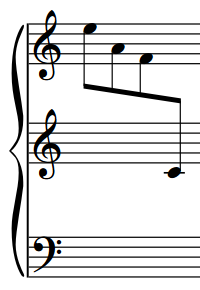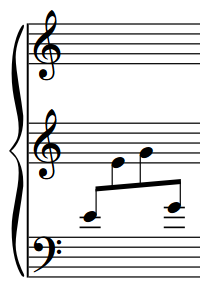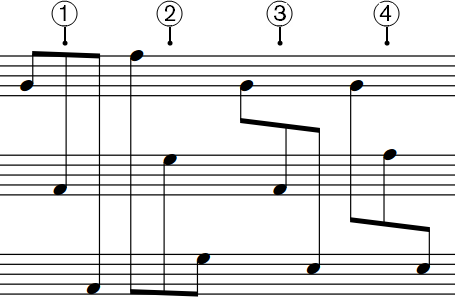Cross-staff beam placement in multiple staves
When instruments have three or more staves, cross-staff beams can be placed in multiple ways. For example, the beam can be placed between the top and the middle staves, and also between the middle and bottom staves.
If a beam only crosses two staves, the cross-staff beam goes between those two staves.

|

|
If a beam group contains notes on all three staves, the placement of the beam depends on the stem directions of the notes in each staff.

-
If all notes in the beam group are stem-up, the beam is placed above the top staff.
-
If all notes in the beam group are stem-down, the beam is placed below the bottom staff.
-
If notes are stem-down on the top staff and stem-up on the bottom two staves, the beam is placed between the top and middle staves.
-
If notes are stem-down on the top two staves and stem-up on the bottom staff, the beam is placed between the bottom and middle staves.
If you have not specified stem directions, Dorico Pro might place the beam above/below the staff into which the notes were originally input, even if the stem directions mean it should be placed between other staves.
If you want the beam to be placed between specific staves, you can change the stem directions of notes in the beam group.